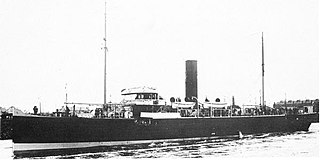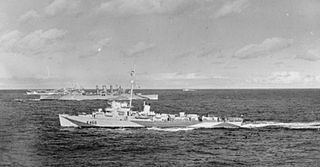Plot
The movie begins with old film footage of World War II with a narrator explaining that Germany produced hundreds of U-boats to control the Atlantic. In 1942, groups of U-boats known as wolfpacks sank over a thousand Allied ships. The Germans began winning the war and if they continued to succeed in destroying the Allies, the Germans will conquer all of Europe. In 1943, Roosevelt and Churchill declared that stopping the U-boats was their main priority. With new technology and the United States committed to the war, the Allies begin destroying the U-boats and bringing an end to the wolfpacks.
In June 1943, Lt. Cmdr. Randall Sullivan (Caan) talks about his upcoming mission with Admiral Kentz (Berkeley). Kentz asks about Sullivan's COB Nathan Travers (Macy), claiming he's a good man and Sullivan could learn something from him. He then bids Sullivan farewell. Elsewhere, as Travers prepares to depart from home, his wife Rachel (Holly) makes him promise to come home safe. Two months later, Travers is on board the USS Swordfish (a fictional submarine based on the real USS Swordfish in World War II), captained by Sullivan, who has the crew constantly perform general quarters drills.
Meanwhile, the U-429 (a fictional U-boat based on the real U-429), captained by Jonas Herdt (Schweiger) survives a depth charge attack by an American destroyer, after which U-429 sinks the ship. After playing chess with his First Watch Officer Ludwig Cremer (Kretschmann), Jonas receives a message from home, informing him that the German city of Hamburg got bombed. The bombing destroyed his daughter's school and there were no survivors, implying that Jonas' daughter was killed.
On the Swordfish, XO Teddy Goodman (Gregg) becomes increasingly sick with a rash on his stomach, which the doctor believes is meningitis, an extremely contagious disease that can sometimes be fatal. Unknown to the crew, Sullivan has a rash on his arm too, indicating he has contracted meningitis.
Another German U-boat, the U-821, sinks the British merchant vessel Achilles. Since there hasn't been any U-boat activity in the area for a while, the closest Allied vessel, the Swordfish, goes to investigate. Radio operator Virgil Wright (Huntington) hears music played by Glenn Miller coming from the U-821, and Sullivan prepares the crew to attack. U-821 detects the two torpedoes fired from the Swordfish and it dodges them, getting into attack position in the process. When Goodman dies from his sickness, Travers takes his place, allowing the Swordfish to fire a third torpedo and destroy the U-821. But the delay caused by Goodman's death allows the U-boat to locate the Swordfish and fire a torpedo near the submarine, where the explosion severely damages the boat and kills most of the crew, forcing the submarine to surface. Sullivan, Travers, and six other crew members Wright, engineers Abers (Sisto), and Ox (Gallagher), and torpedomen Miller (Somerholder), Cooper (Giovinazzo), and Romano (Morgan) abandon ship and are taken prisoner by the nearby U-429.
The Germans split their prisoners into two groups: Travers, Ox, Cooper, and Miller in the bow and Sullivan, Wright, Abers, and Romano in the stern. Wright nurses Sullivan and discovers his rash, where Abers recognizes it as meningitis and the group realizes that if the Germans don't kill them, the disease will.
Days later, the U-429 prepares to attack an American destroyer, the USS Logan (a fictional destroyer based on the real USS Logan). Travers and his group break free of their bonds and succeed in firing one of the U-boat's torpedoes off course, away from the Logan. The torpedo detonates, alerting the Logan to the U-boat's presence. The Logan then attacks the U-429 with depth charges. The explosions allow Sullivan's group to break free as well. Sullivan protects his crew by fighting off a German guard but gets killed in the process.
The meningitis begins spreading and it kills two thirds of the German crew, including Romano of the Americans. Later on, Travers has a hallucination of Rachel, who reminds him of his promise to come home.
With no other choice, Jonas decides to have Travers' men work with his remaining crew in order to save them all. They plan to sail to the United States coast and be taken into custody. As both crews reluctantly work together, Jonas explains to Travers that he saved Travers' men in defiance of the standing protocol of capturing only the captain and COB of an enemy ship. He says he personally saved all of them because he's grown tired of the war and he felt strong for himself by saving lives instead of taking them. Jonas says if they come across either enemy, they must guarantee that their men will go home.
During their travel to the United States coast, Klause (Heger), the U-429's quartermaster, becomes disillusioned with Jonas working with the Americans and orchestrates a mutiny, along with two other crew members, Lieutenant Bauer and the U-429's radio operator Christophe. Abers and Wright subdue Christophe, who makes a distress call to other U-boats, and engineer Hans (Thorsen) knocks out Bauer to save Ox. Klause unsuccessfully attempts to use the last bow torpedo to blow up the boat, but manages to fatally stab Jonas in the back. Travers reacts by using a hoist chain to break Klause's neck, killing him quickly. With his dying breath, Jonas gives command of the boat to Cremer.
The U-429 encounters the Logan again and tries to make contact with the destroyer, but they're attacked by the U-1221, another U-boat that responded to the distress call. The U-1221 fires several torpedoes in an attempt to sink the U-429, while the Logan is once again put on the alert. Enduring heavy damage as they evade every torpedo attack, two German crew members try to convince Cremer to fight back, but he refuses to fire on his own countrymen. Abers and Travers convince Cremer to fight, only for him to reveal that they only have one torpedo left in the stern. After passing on top of the enemy submarine to align the stern tubes with it, the crew uses the last torpedo to destroy the U-1221, but it doesn't detonate. The U-1221 fires another torpedo at the U-429 that doesn't cause any serious damage right before the Logan locates it with its sonar and fires its guns into the water, destroying the U-boat.
When Travers makes contact with the Logan, Captain Samuel Littleton (Ellis) orders Travers to take the Enigma. Travers falsifies that they're sinking and disconnects with the Logan, keeping his promise to Cremer to never let the U-429 be captured. The crew floods the boat and are rescued by the Logan.
Returning home, Travers confronts Kentz about the Germans saving their lives. Kentz says the Germans are still the enemy, but he'll do his best to have them taken care of. Travers and Rachel are reunited and they go visit Cremer in a POW compound, where Rachel thanks Cremer for saving her husband's life. Travers and Cremer share with each other about Jonas succeeding in saving the crew and that the war will soon be over and despite becoming prisoners, the Germans will go home for good. Travers gives Cremer cigarettes and tells him that it's good to see him before leaving and Cremer watching on.














